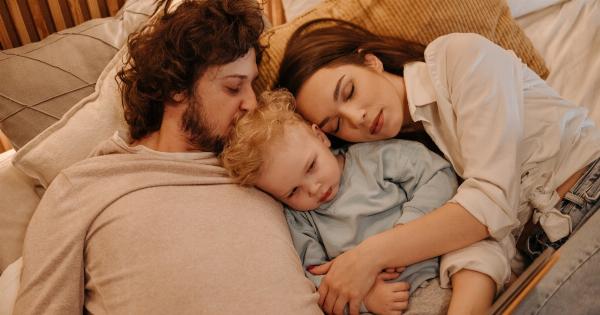Establishing a consistent and soothing bedtime routine can help signal to your child that it is time to wind down and prepare for sleep. This routine may include activities such as taking a warm bath, reading a bedtime story, or listening to calm music.
Consistency is key, so try to follow the same routine every night.
2. Limit Screen Time Before Bed
Excessive exposure to screens, such as smartphones, tablets, or televisions, close to bedtime can interfere with your child’s ability to fall asleep.
The blue light emitted by these devices can suppress melatonin production, a hormone that regulates sleep. Encourage your child to engage in screen-free activities at least an hour before bedtime.
3. Create a Comfortable Sleep Environment
Ensure that your child’s bedroom is conducive to a restful sleep. Keep the room cool, dark, and quiet. Consider using blackout curtains, a white noise machine, or a fan to create a calm environment.
It may also be helpful to provide your child with a cozy and comfortable mattress, pillows, and blankets.
4. Encourage Regular Physical Activity
Engaging in regular physical activity during the day can help your child expend energy and promote better sleep at night. Encourage activities such as playing outside, participating in sports, or dancing.
However, it is important to avoid vigorous exercise close to bedtime, as it may interfere with falling asleep.
5. Establish Consistent Bedtimes and Wake-Up Times
By setting consistent bedtimes and wake-up times for your child, you can help regulate their internal body clock, also known as the circadian rhythm. Consistency helps their body recognize when it is time to sleep and wake up.
Aim for the same sleep schedule on weekdays and weekends to avoid disrupting their sleep pattern.
6. Limit Caffeine and Sugary Foods
Caffeine and sugary foods can interfere with your child’s ability to fall asleep quickly. Avoid giving them caffeine-containing beverages like soda or energy drinks close to bedtime.
Additionally, limit their consumption of sugary snacks and desserts that may lead to a spike in energy levels and make it harder for them to settle down for sleep.
7. Address Anxiety or Worries
Some children may have difficulty falling asleep due to anxiety or worries. Take time to listen to your child’s concerns and provide reassurance. Encourage them to express their feelings and talk about any worries they may have.
Implement relaxation techniques such as deep breathing exercises or guided meditation to promote a sense of calm before bedtime.
8. Avoid Stimulating Activities Before Bed
Avoid engaging in stimulating activities close to bedtime, as they can make it harder for your child to fall asleep. This includes playing exciting video games, watching thrilling movies, or engaging in intense physical activities.
Instead, opt for quiet and calming activities that promote relaxation and prepare your child for sleep.
9. Check for Physical Discomfort
Physical discomfort, such as pain or discomfort from a health condition, can make it difficult for your child to fall asleep. Ensure that your child is comfortable and free from any physical discomfort before bedtime.
Address any concerns with their pediatrician if necessary.
10. Encourage Independent Sleep Skills
Teaching your child independent sleep skills can empower them to fall asleep faster and self-soothe when they wake up during the night. Encourage them to soothe themselves back to sleep without depending on you to intervene.
Gradually implement strategies such as the “bedtime fading” technique to help your child develop these important skills.





























